Office of Privacy Policy and Compliance
Research Center
X-Ray Backscatter Technology and Your Personal Privacy
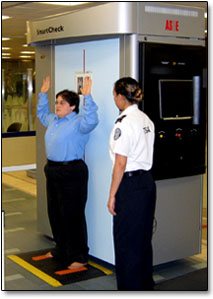
In its endeavor to protect the nation's transportation infrastructure as well as the traveling public, TSA strives to provide both optimum security and maximum privacy protections to the traveling public.
TSA has been testing various technologies that may enhance security without diminishing the personal privacy of passengers at the security screening checkpoint. One of the technologies being tested is X-ray backscatter technology.
Video of the Backscatter Scanning Process
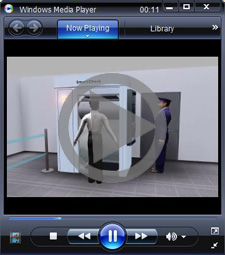
Click Here to learn more about the
backscatter scanning process
(wmv, streaming)
Backscatter will be able to detect non-metallic devices and objects, as well as weapons or other harmful objects that a passenger may be carrying on his or her person.
TSA has been working closely with the vendors to build individual privacy protections into the technology in addition to providing added security benefits.
What are the Privacy Benefits of Backscatter?
Image detail is limited
TSA has worked closely with the vendors to modify the image of the passenger that is taken by Backscatter. The images below are actual images shown to the Transportation Security Officer during the backscatter process.
Male Front View
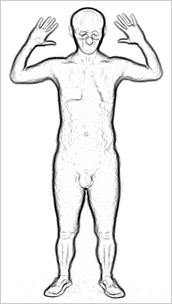
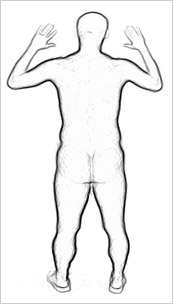
Female Front View
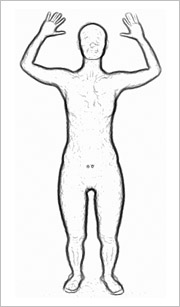
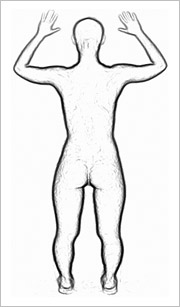
Images will not be printed, stored or transmitted
To further enhance privacy, when the Transportation Security Officer has resolved any anomaly, the image is erased from the screen. The capability of printing, storing or transmitting the image is not available to the Transportation Security Officer operating the system.
Screener viewing images is remotely located
In addition to not storing, printing or transmitting the image, the Transportation Security Officer will be viewing the image on a stand-alone machine (vs. network) that is located in a remote area from the screening process in order to protect the passenger's privacy, therefore the image will not be visible in the public domain. The Transportation Security Officer who is attending to the passenger at the backscatter machine is unable to see the image being produced.
Limits the need for physical pat downs at the checkpoint
Passengers who are selected for secondary screening currently have to walk through the metal detector and are subject to physical pat down searches. Backscatter limits the need for the physical pat downs due to the imaging capabilities of the technology.
Voluntary
Backscatter is a voluntary option for passengers undergoing secondary screening as an alternative to the physical pat down procedures currently conducted by Transportation Security Officer s at the security screening checkpoint.
Download Plug-in
Some of the links on this page require a plug-in to view them, which are available below.



